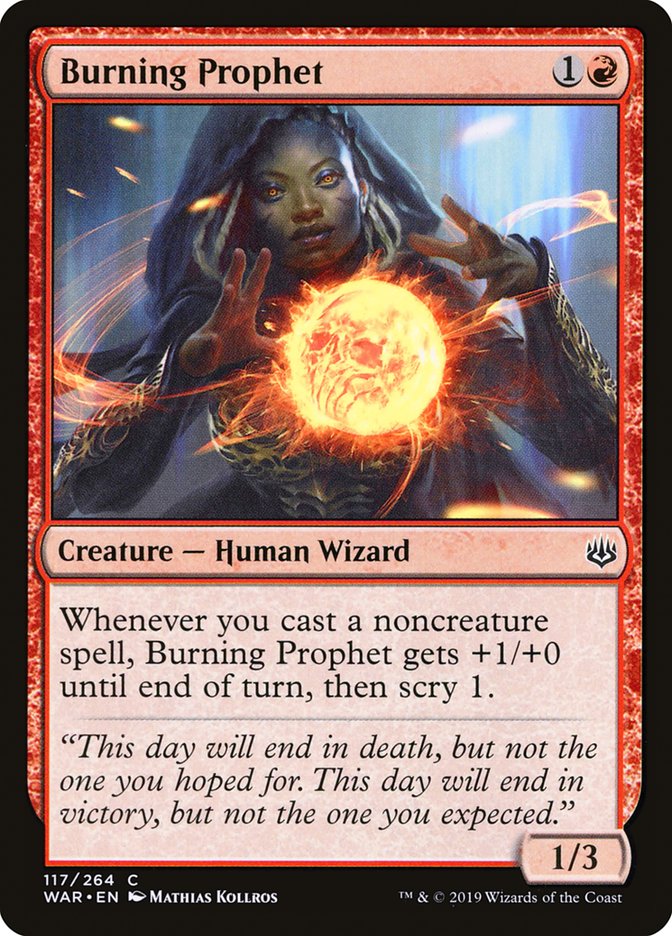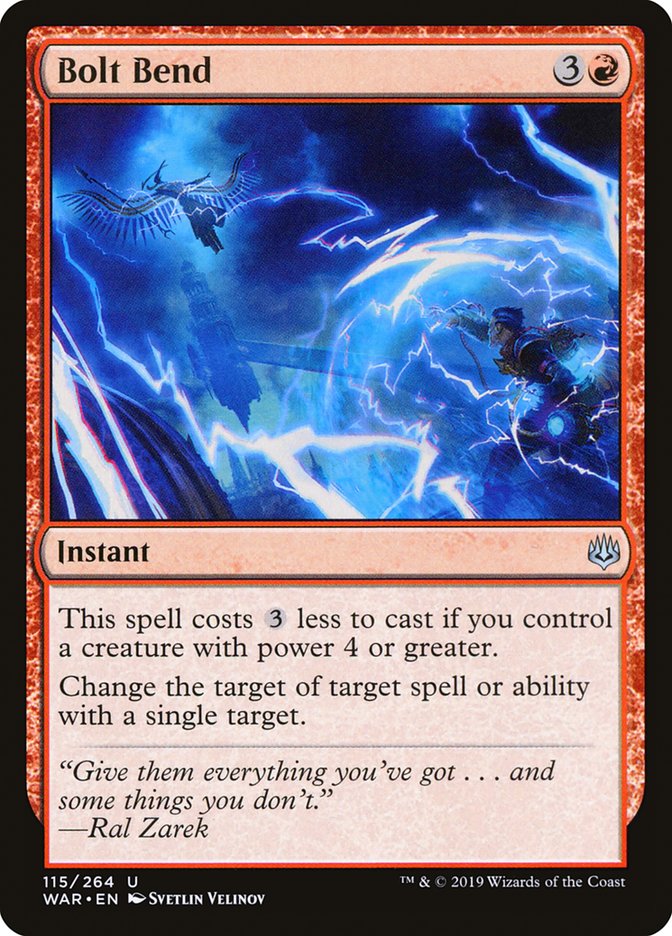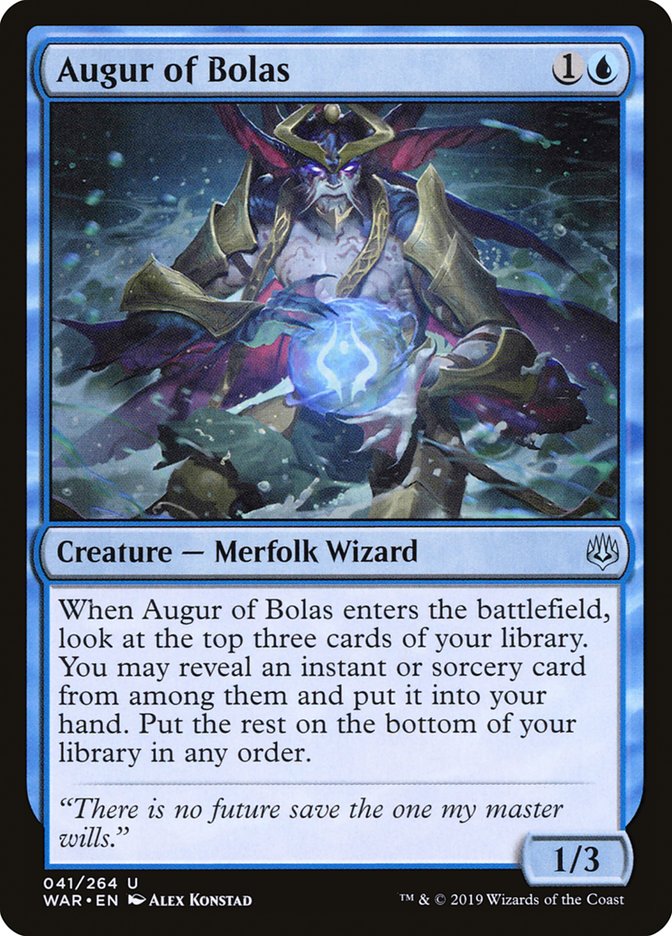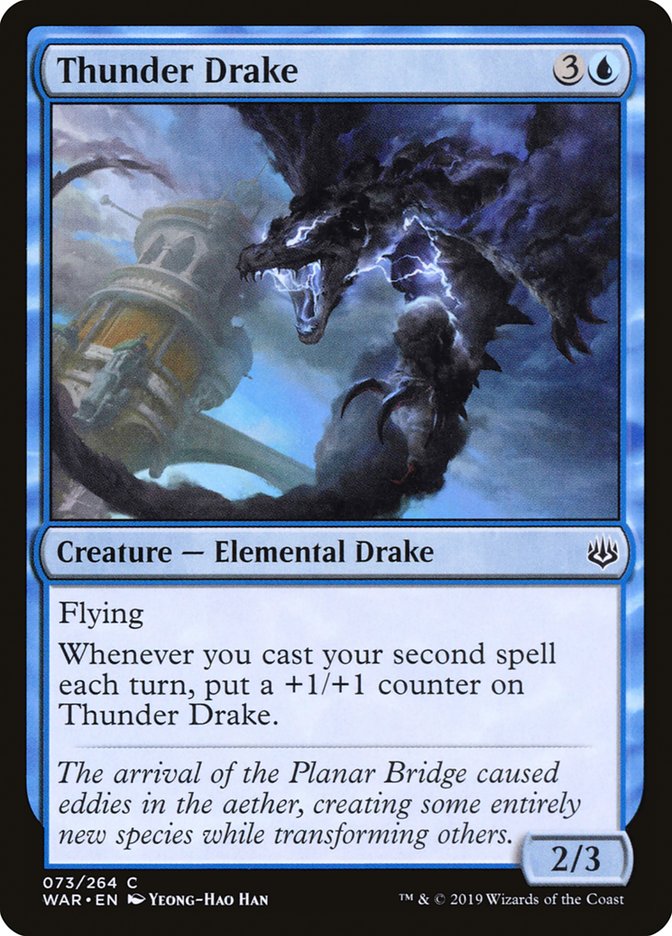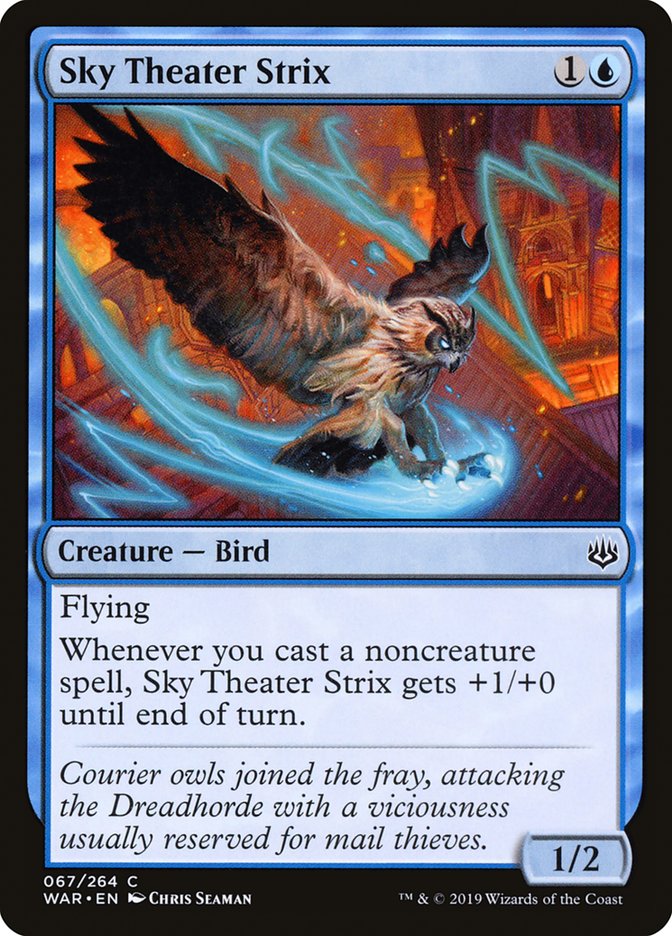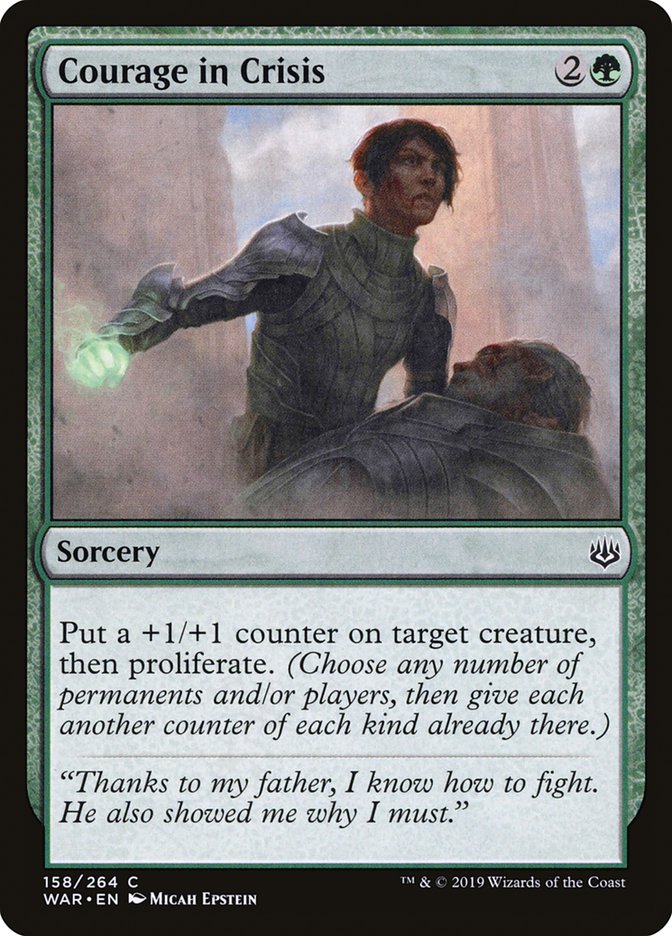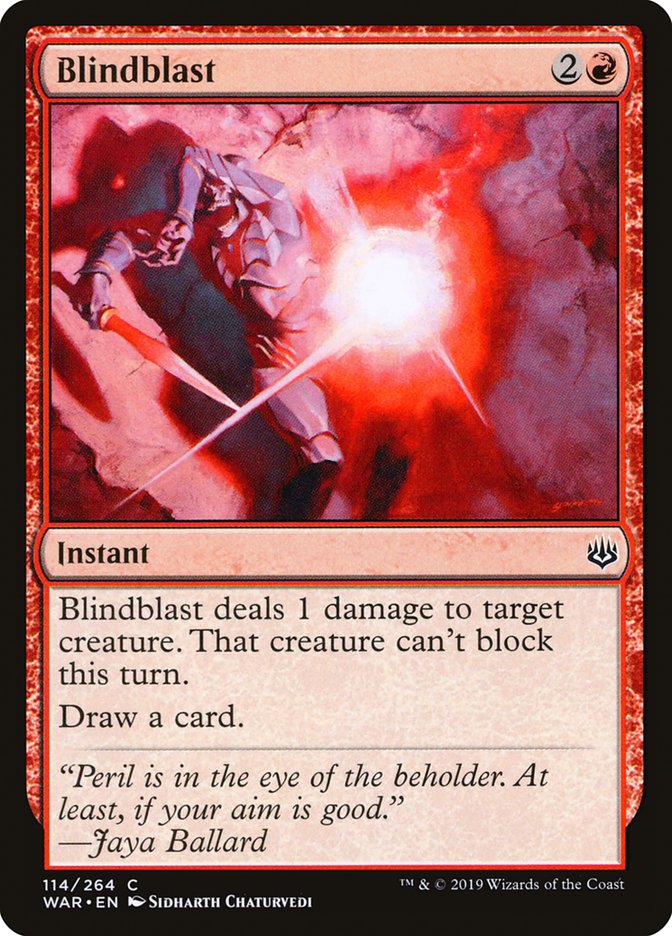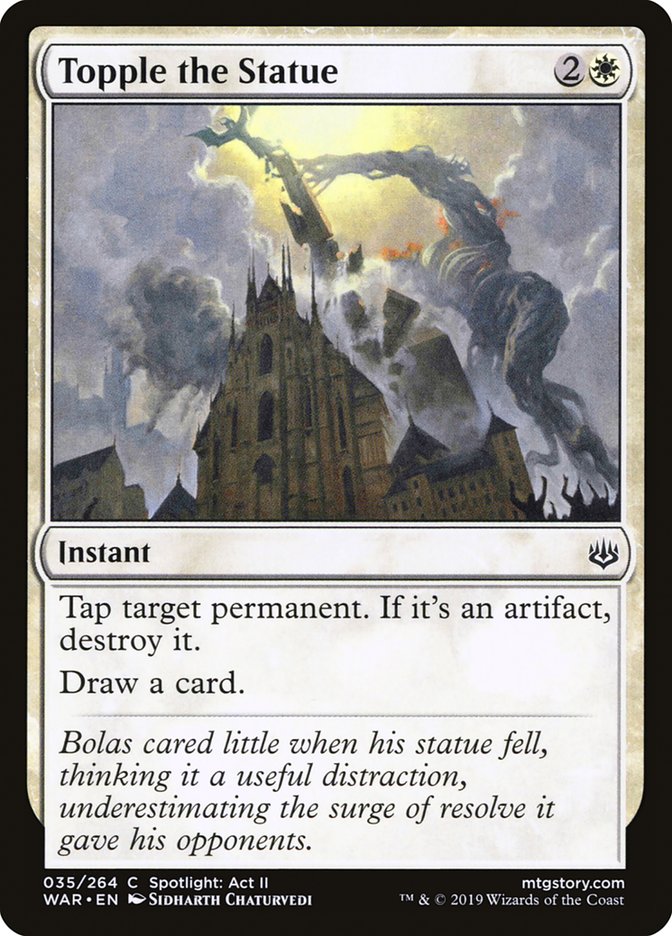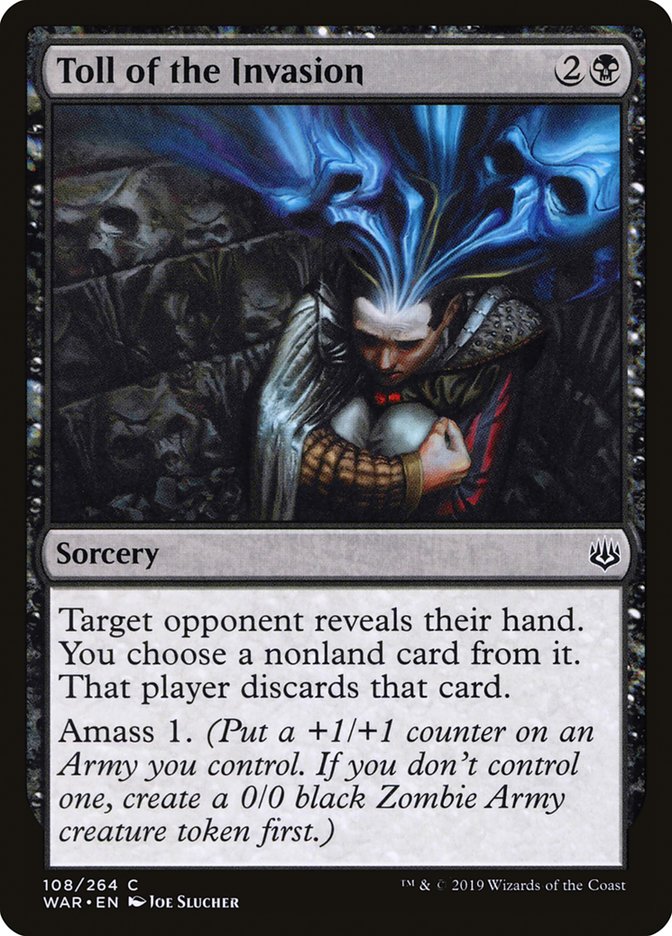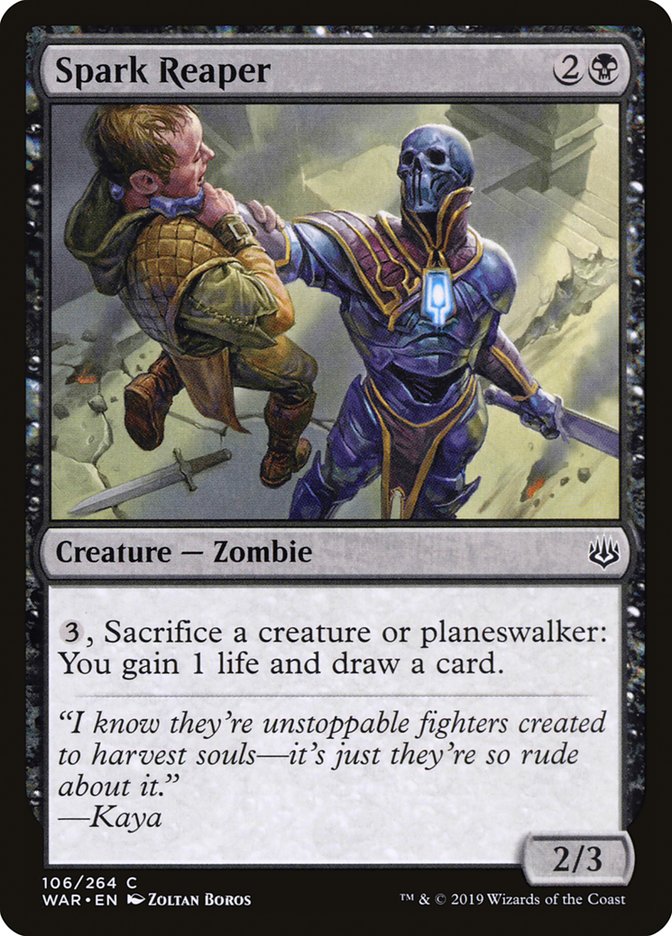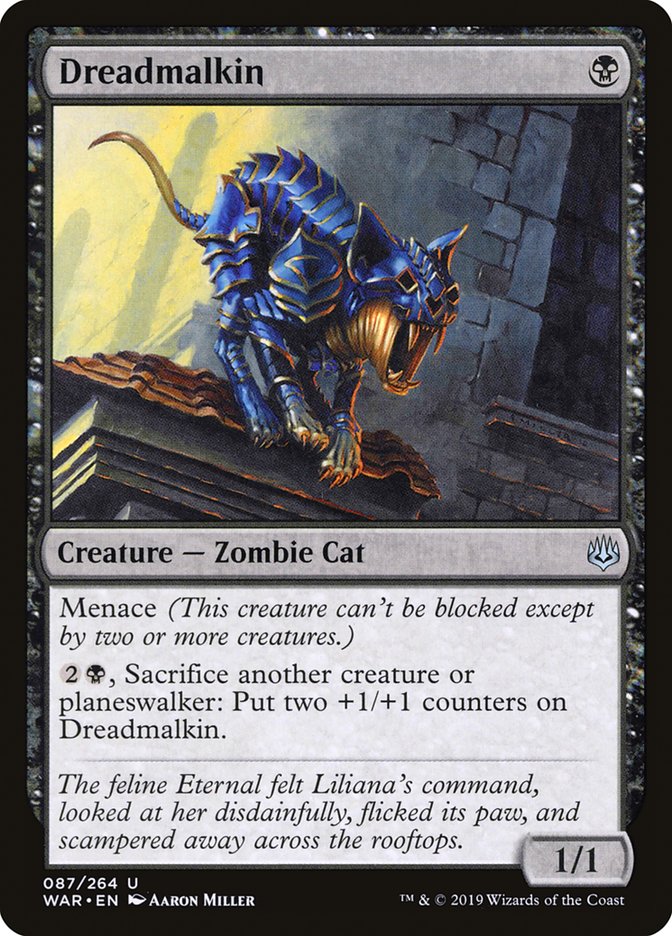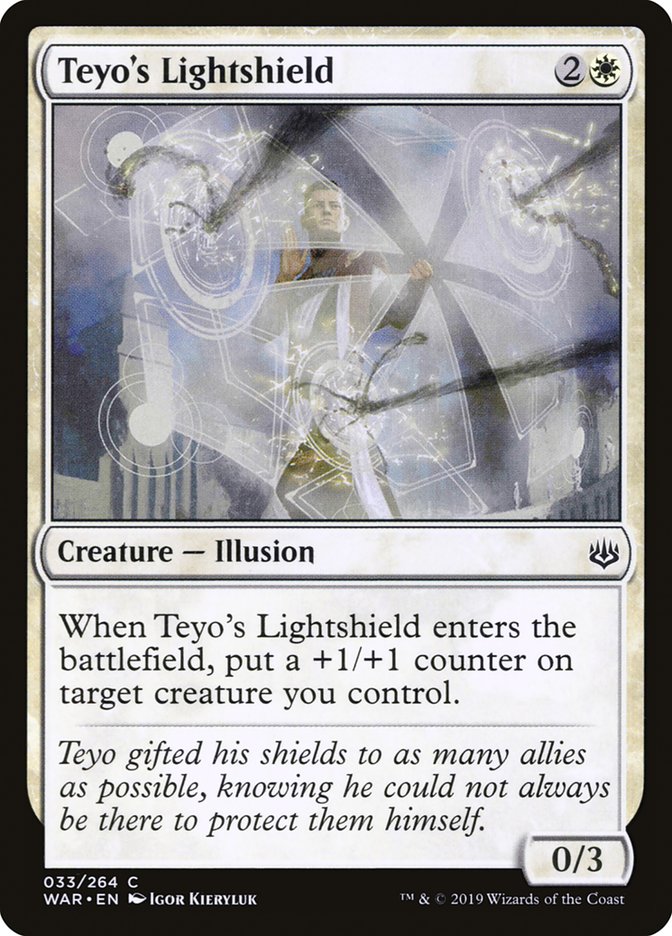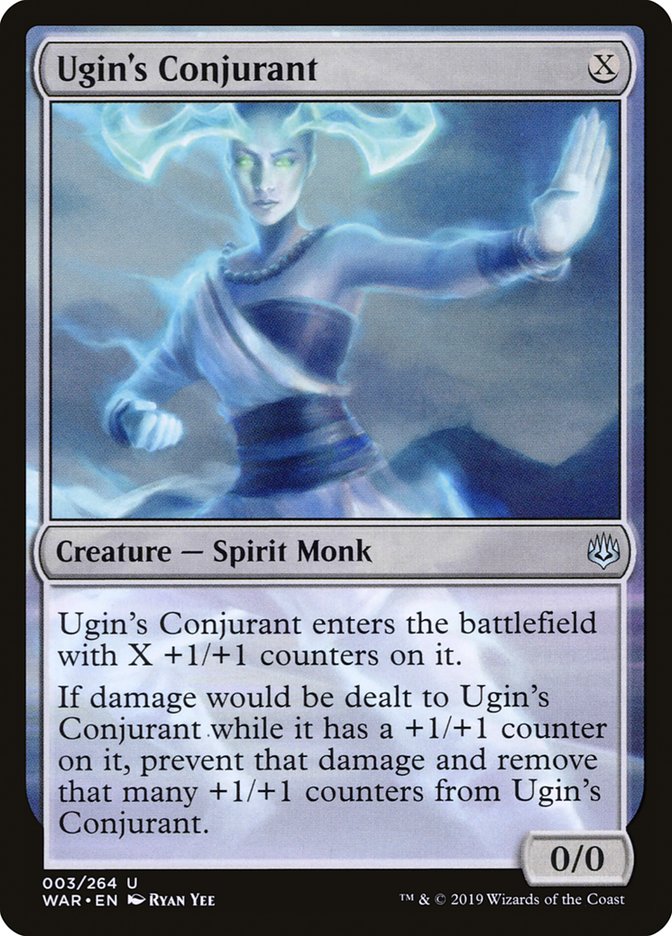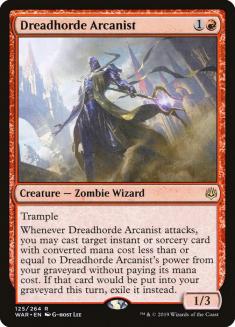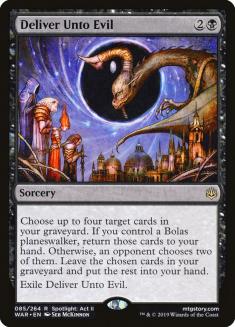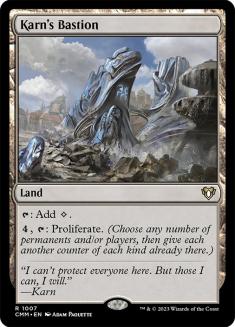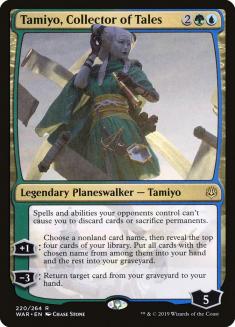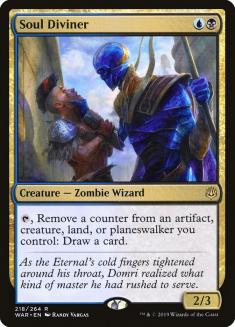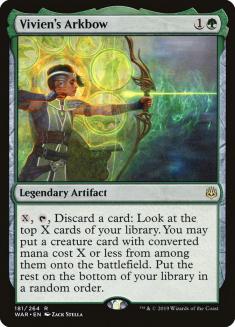War of the Spark is a pretty great Draft format. I’m about 40 drafts into the format, and while I don’t think it will go down as one of the best of all time, it does get more enjoyable after every draft. Additionally, this format has aspects that are unparalleled in prior Draft formats. The power-level at common and overall planeswalker density have created a novel environment.
Further, this impacts card evaluation. I can’t remember the last time this many cards I expected to be mediocre turned out to be great. Consider Narset, Parter of Veils. My initial ranking of the planeswalkers had Narset as a card I didn’t want to put in my deck. But it turns out that Narset is a great card to first-pick.
Today, I’ll be going over a list of cards I believe are undervalued by the majority of drafters.
The conditional damage clause on Turret Ogre causes many to misevaluate the card. Turret Ogre reads as an aggressive card, but it’s actually the best defensive red card in the set.
War of the Spark Limited is all about evasion. A lot of cards on this list will be efficiently costed evasive creatures. It’s extremely important to get on the battlefield early with creatures that can attack planeswalkers, and that strategy is ideal because even if the opponent doesn’t have planeswalkers, it’s a good setup for winning the game. Because of this, Turret Ogre is an important red card. It allows you to save your Ob Nixilis’s Cruelty for more impactful cards rather than some Wind Drake, for example.
I’m happy to play this card in multiples in a lot of my red decks. It sometimes still ends up in the sideboard if I don’t believe my deck is weak to fliers and the four-mana slot is cluttered, but that isn’t common. To make a concrete comparison, I believe Turret Ogre is better than Dreadhorde Twins in most red decks.
Burning Prophet might be the most underrated common in the set and I know this is a bold statement, but I believe that Burning Prophet is in the top five commons. Like Turret Ogre, Burning Prophet is deceiving because it’s secretly the best aggressive red card. We are trained to think aggressive decks contain many creatures and that a two-mana 1/3 isn’t aggressive. But both Izzet and Boros Aggro are amazing archetypes if you can get multiples of Burning Prophet. Furthermore, there are versions of Rakdos and Gruul Aggro where Burning Prophet is fantastic as well. With planeswalkers and amass cards that are noncreature spells which function as creatures, it’s very easy to trigger Burning Prophet and the scry increases the probability of drawing another noncreature spell to trigger it again.
Trust me when I say I would play six copies of Burning Prophet in pretty much any red deck and that’s why I have it in the top five commons. Two-drops are at a premium because of how playing to the battlefield is crucial to success in this format. Burning Prophet makes all the aggressive decks function well and it’s still a fantastic two-drop for the midrange/controlling decks. I’m not unhappy to first-pick it and I’ve seen the card wheel before.
Bolt Bend is surprisingly good. It may appear as though it’s too conditional, but it’s not hard to get a four-power creature in this format. And for one mana, this effect is amazing. Red decks play Spellgorger Weird, Turret Ogre, and Raging Kronch, which are all commons that can turn on the cheap side of Bolt Bend. Don’t forget that this can redirect a planeswalker activation like that of Kaya, Bane of the Dead or Davriel, Rogue Shadowmage. I don’t take the card extremely highly, but I see it go late and I don’t believe that should be the case.
Augur of Bolas is a running joke in the Magic community. “Look at the bottom three cards of your library,” says some stranger on the internet, cackling because Augur of Bolas never hits. Well, this is actually the perfect Limited format for Augur. Not only are decks often chock-full of hits, but given the lack of good two-mana plays and necessity to have a creature on the battlefield early, I’m happy to include Augur of Bolas in my decks.
Thunder Drake is fantastic and I take it over Tamiyo’s Epiphany early on. Even though Epiphany is a more powerful card, having evasive threats is crucial to success in this format. It’s extremely easy to get one counter on Thunder Drake, and if you get a second it upgrades from a Drake to a Dragon. Sometimes all it takes is Contentious Plan and that’s a common that goes reasonably late. I want Thunder Drake in all my blue decks and so should you.
Sky Theater Strix is awesome. At first, it looked like a glorified Storm Crow that required synergy to be okay, but the way the format ended up, I’m happy to include multiples of Sky Theater Strix in most blue decks.
Have you recognized a pattern in what cards are underrated? They’re cheap and/or affect the battlefield with evasion. The Strix is a planeswalker killer and the difference between a Davriel, Rogue Shadowmage or Narset, Parter of Veils on an empty battlefield and one with a flier is immense. Strix also combos with both of the following underrated cards.
I think both Stealth Mission and Courage in Crisis seem to end up in sideboards more often than not and I’ve gotten them last-pick many times. To be clear, I don’t think they’re fantastic Magic cards, but they fill an important role, and understanding when and how to leverage them is necessary to succeed in War of the Spark Draft. These are cards I want to take on the wheel, but when I do, I am looking to draft a deck where they excel.
Courage in Crisis is a key component to any proliferate deck. It’s one of the few cards that can both proliferate and start the train with the counters. Augmenting your creatures as a surprise can be card advantage if it enables an attack on a planeswalker. That’s why Stealth Mission can be so good – it’s a planeswalker killer.
This is relevant to Sky Theater Strix, and many other two-drops, because if you curve Strix into one of these sorceries, you’re attacking with a Dragon on Turn 3. Sometimes your opponent will have removal, but many times they won’t and it even gets the Bird out of range of many red removal spells anyway. This format is all about who has the better battlefield presence, and you’d be surprised at how both Stealth Mission and Courage in Crisis can provide value while also giving you the better battlefield presence.
Blindblast and Topple the Statue are in the same realm as Stealth Mission and Courage in Crisis – they’re cards that should wheel but play an important role and I don’t think enough players start these cards in their 40-card decks. Many of the red decks care about spells. Cantrips are valuable when you have additional scry with Burning Prophet and get counters on Spellgorger Weird. Furthermore, removing a blocker can kill a planeswalker, and sometimes you’ll get lucky enough to snipe a one-toughness creature.
I like Blindblast more than Topple the Statue, mostly because white cares less about noncreature spells, but Topple still plays an important role. Aggressive decks need ways to push through damage and kill planeswalkers. However, the secret mode of Ice is not to be underestimated. I have won multiple games in this format by using Topple the Statue to tap a land, and when you can position yourself to have a better presence on the battlefield, the tempo advantage of tapping a land can be devastating. It’s especially good against other white decks, as it can invalidate cards like Divine Arrow and Gideon’s Triumph.
The world is starting to come around on Toll of the Invasion, but I still don’t think people are high enough on it. I’m happy to play more than one Toll in all of my black decks. The card is often compared to Coercion, but the 1/1 body that comes along with Toll is not to be understated. With other amass cards, sacrifice outlets, and proliferate, that 1/1 Zombie Army turns into a real creature that can pressure planeswalkers and trade with opposing creatures more often than you expect.
Sacrifice outlets are better than you think they are. Spark Reaper and Dreadmalkin make your opponent’s life quite difficult. Spark Reaper entirely blanks removal spells and Dreadmalkin asks your opponent to use removal on a one-mana creature. The menace on Dreadmalkin is fantastic, and every game I cast that card on Turn 1, it feels like my opponent’s planeswalkers are invalidated. A 1/1 with menace isn’t much, but a 3/3 with menace is a very good card. And with the addition of cards like Toll of the Invasion, it’s not difficult to upgrade Dreadmalkin.
Spark Reaper functions on a more reactive axis, where Dreadmalkin functions on a more proactive one. However, the Reaper is still a great card that provides late-game inevitability and a good body to play on Turn 3. And don’t forget that if the opponent is attacking your planeswalker, you can sacrifice that too.
This card looks like a vanilla 1/4 for three, which is quite terrible. However, the necessity for a +1/+1 counter in a color that cares about proliferate is higher than I expected. Take a look at my Draft deck from Grand Prix Madison:
2-1 the first pod. GW was pretty open, but some of the common counter cards weren't wheeling so the deck felt a little short. pic.twitter.com/6S9QmxPGtV
— Ryan Saxe (@rcsaxe) May 12, 2019
My deck was good but just short on ways to put counters on my creatures. I was hoping to wheel a Teyo’s Lightshield or even the fourth Charmed Stray, but they didn’t come back. Even Courage in Crisis and Battlefield Promotion got nabbed by other players. Having enough cards that can get the proliferate train rolling is important and Teyo’s Lightshield is one you should keep your eye on.
Additionally, Teyo’s Lightshield is perfect for Azorius. This is a card I have seen in many sideboards of Azorius decks and I disagree with that. There’s often a little bit of proliferate for additional value, but the flexibility of the Lightshield as a good blocker on the ground, but also a way to enhance a flier is exactly what that type of deck is looking for.
While I don’t know if Ugin’s Conjurant is still underrated, it was criminally underrated for quite some time. It can be difficult to read a card, recognize the downside, and understand that the downside is dwarfed by the upside. Ugin’s Conjurant is a first-pick out of most of the packs you see it in. It’s a colorless threat that is functional anywhere on the curve.
If you’re missing two-drops, boom, it’s your two-drop. If you need four-power creatures to trigger your Kronch Wranglers, boom, it’s four power. It works phenomenally with proliferate, it lines up great against deathtouch, and more. A way to recognize that the downside is minimal is that if Ugin’s Conjurant is ever on the battlefield with fewer counters than it started with, Ugin’s Conjurant traded for more than one card and is hence card advantage.
I don’t like getting into which rares aren’t properly rated because it’s relevant less often, but here is a list of rares that you should probably be taking higher. If you strongly disagree with any of these or are confused about why I like them more than the general public, feel free to get in an argument with me about it on Twitter!



